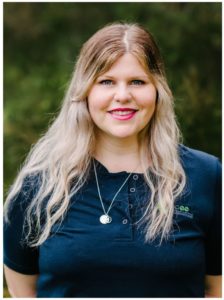Why Morning Routines Can Be Challenging and How to Help Your Child Succeed
Mornings can be tough, especially when your child struggles to follow instructions or stay on track. Here’s a quick guide to help you understand the potential issues and what you can do to make mornings smoother.
This joint-blog has been co-written by a Speech Pathologist and Occupational Therapist to outline some of the developmental areas that combine together, that are the foundation of following daily routines.
What Could Be the Problem?
Difficulties understanding your instructions
- At 3-4 years old children can typically
- Understand simple sentences
- Understand sentences with 3 key words (information carrying words that are needed to follow the instruction)
- Understand instructions with up to 2 steps
- At 4-5 years old children can typically
- Understand sentences with 4 key words,
- Understand instructions with 2 steps
- Answer questions about daily tasks
- Describe recent events and routines
- At 5-6 years old children can typically
- Follow instructions with 2-3 steps
- Answer open-ended questions – what, who, where, why
- understand instructions without stopping to listen
- Understand time words, including “before,” “after,” “now,” and “later.”
- At 6-7 years old children can typically
- Follow instructions with 3-4 steps
- Ask and answer “who, what, where, why, when” questions.
- At 7-8 years old children can typically
- follow instructions with 3-4 steps
- understand words about place and time (e.g., “on top,” “behind,” “tomorrow”).
Check out our blog on language development for more information on how language develops – https://www.cooeespeech.com.au/2024/06/language-development-in-the-first-5-years
Difficulties understanding cause and effect relationships and vocabulary:
- At 3-4 years old, children are beginning to use “because” and “then.”
- At 5 years old children are beginning to use more complex words like “so,” “if,” “when,” “until.”
Big emotions may occur as a result of others big emotions or too much going on:
-
- Parent Regulation: Your stress level can directly impact your child’s behavior.
- Brain Load: too many steps to remember
- Support: something in the routine needs more support and your child might not be sure how to ask for that if you’re placing a strong expectation
See our blog for more information on supporting regulation – https://www.cooeespeech.com.au/2023/06/top-tips-to-support-your-childs-regulation-and-how-ot-can-help
Being able to start or finish a task:
- Initiation (Starting): To get started, your child needs to know what to do, where to do it, and how to take the first step. They also need the confidence and self-regulation to begin.
- Completion (Finishing): If the final step is unclear, unknown or missed, your child may not know when to move on to the next task.
See our blog for more information on self-organisation and how these skills develop in children – https://www.cooeespeech.com.au/2024/06/self-organisation-what-is-it-and-why-do-we-need-it
What Can You Do to Help?
Communication Tips:
- Be Clear:
- Use language that matches your child’s level of understanding.
- Break down instructions into manageable steps.
- Be Supportive:
- Group similar tasks together (e.g., uniform on, breakfast, pack bag).
- Use visuals or gestures to reinforce instructions (e.g., hold up one finger for the first task).
Show them what to do:
- Model the Vocabulary:
- Use the words and sentences your child needs to describe their routine.
- Think aloud to show your decision-making process (e.g., “I’ll finish packing lunches, then help you with your hair”).
- Model Emotional Regulation:
- Label your feelings and strategies (e.g., “I’m feeling rushed, so I’ll take a few deep breaths”).
- Finish tasks before moving on to the next one.
Meeting Your Child’s Needs:
See the Need:
If your child wants you to do something they can do themselves, consider they might need extra connection.
- Example: Request to do hair (even when capable)
- Need: Connection with you.
- Say: “You’re feeling like you want a bit more time with me today.”
- Do: Do their hair with them.
- Example: Slowness in Tasks
- Need: Connection while doing a task.
- Say: “You’re showing me that you want extra time with me by eating slower.”
- Do: Sit with your child while they eat (no phones!).
With these tips, you can help your child navigate morning routines more easily, making your mornings less stressful and more connected.
If you notice that some of the basic skills outlined at the top of the blog are missing or your child continues to struggle with their routines, contact your local speech pathologist or occupational therapist for consultation.


Tess Marson (Speech Pathologist) & Hanna Corfield (Occupational Therapist & Clinical Lead)
